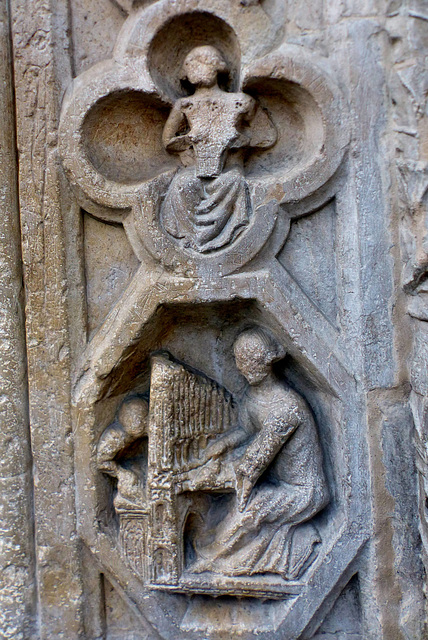Perugia - Fontana Maggiore
Perugia - Fontana Maggiore
Perugia - Fontana Maggiore
Perugia - Fontana Maggiore
Perugia - Fontana Maggiore
Perugia - Fontana Maggiore
Montelabate - Abbazia di Santa Maria di Valdiponte
Montelabate - Abbazia di Santa Maria di Valdiponte
Montelabate - Abbazia di Santa Maria di Valdiponte
Montelabate - Abbazia di Santa Maria di Valdiponte
Montelabate - Abbazia di Santa Maria di Valdiponte
Montelabate - Abbazia di Santa Maria di Valdiponte
Montelabate - Abbazia di Santa Maria di Valdiponte
Montelabate - Abbazia di Santa Maria di Valdiponte
Montelabate - Abbazia di Santa Maria di Valdiponte
Montelabate - Abbazia di Santa Maria di Valdiponte
Montelabate - Abbazia di Santa Maria di Valdiponte
Montelabate - Abbazia di Santa Maria di Valdiponte
Gubbio - San Francesco
Gubbio - San Francesco
Gubbio - San Francesco
Gubbio - San Francesco
Gubbio - Logge dei Tiratori
Perugia - Fontana Maggiore
Perugia - Piazza IV Novembre
Perugia - Pigeons
Perugia - La Rosetta
Perugia - La Rosetta
Perugia - San Domenico
Perugia - Saint Giuliana
Perugia - Sunset
Perugia - Rocca Paolina
Perugia - Cattedrale di San Lorenzo
Perugia - Arco Etrusco
Perugia - Bolle Blu
Perugia - San Michele Arcangelo
Perugia - San Michele Arcangelo
Perugia - San Michele Arcangelo
Perugia - San Michele Arcangelo
Perugia - San Michele Arcangelo
Perugia - San Michele Arcangelo
Perugia - La Rosetta
Umbria
Grutti - Ristorante Le Noci
Grutti - Ristorante Le Noci
Location
Lat, Lng:
You can copy the above to your favourite mapping app.
Address: unknown
You can copy the above to your favourite mapping app.
Address: unknown
See also...
Keywords
Authorizations, license
-
Visible by: Everyone -
All rights reserved
-
191 visits
Perugia - Fontana Maggiore


Perugia was an Umbrian settlement that became a Roman colonia around 250 BC. In 547 Totila´s Ostrogoth troops looted the city after a long siege. Legends tell, that Perugia´s bishop Herculanus, who negotiated with Totila in behalf of his folks, got beheaded by the Ostrogoths, making St. Herculanus (aka "Sant' Ercolano") to the city´s patron saint.
In the 9th century it passed under the popes, but within the 11th it century gained independency. After a long conflict, in 1370 the city signed a treaty accepting a papal legate, but already 5 years later the vicar-general of the Papal States was expelled by a popular uprising. During the Italian Wars Perugia passed through many hands until Condottiero Braccio da Montone reached a concordance with the Papacy. It did not bring peace to the city, but led to the "Salt War" in 1540, that had started as a protest against paying new taxes on salt. The papal troops forced a surrender.
-
The Fontana Maggiore is located on the "Piazza IV Novembre" (ex "Piazza Grande") between the cathedral (background) and the Palazzo dei Priori (my POV). It was created between 1277 and 1278 by the famous sculptors Nicola Pisano and his son Giovanni Pisano, known for their works in Pisa and Siena.
Once the place was occupied by the bishop´s citadel. After the demolition of the citadel, the fountain got erected here as a symbol of the free city. The Fontana Maggiore is considered one of the finest still existing medieval fountains.
Many interesting details can be found around the fountain.
Her are two musicians. One is playing a harp and the second one playing a portative, a small, portable organ.
Today the fountain is secured by iron bars. In the past it was obviously possible to scratch in graffiti.
In the 9th century it passed under the popes, but within the 11th it century gained independency. After a long conflict, in 1370 the city signed a treaty accepting a papal legate, but already 5 years later the vicar-general of the Papal States was expelled by a popular uprising. During the Italian Wars Perugia passed through many hands until Condottiero Braccio da Montone reached a concordance with the Papacy. It did not bring peace to the city, but led to the "Salt War" in 1540, that had started as a protest against paying new taxes on salt. The papal troops forced a surrender.
-
The Fontana Maggiore is located on the "Piazza IV Novembre" (ex "Piazza Grande") between the cathedral (background) and the Palazzo dei Priori (my POV). It was created between 1277 and 1278 by the famous sculptors Nicola Pisano and his son Giovanni Pisano, known for their works in Pisa and Siena.
Once the place was occupied by the bishop´s citadel. After the demolition of the citadel, the fountain got erected here as a symbol of the free city. The Fontana Maggiore is considered one of the finest still existing medieval fountains.
Many interesting details can be found around the fountain.
Her are two musicians. One is playing a harp and the second one playing a portative, a small, portable organ.
Today the fountain is secured by iron bars. In the past it was obviously possible to scratch in graffiti.
- Keyboard shortcuts:
Jump to top
RSS feed- Latest comments - Subscribe to the comment feeds of this photo
- ipernity © 2007-2025
- Help & Contact
|
Club news
|
About ipernity
|
History |
ipernity Club & Prices |
Guide of good conduct
Donate | Group guidelines | Privacy policy | Terms of use | Statutes | In memoria -
Facebook
Twitter

Sign-in to write a comment.